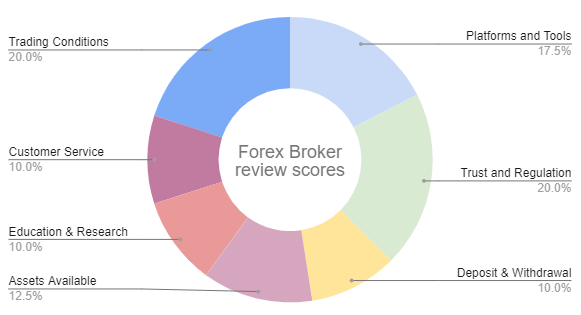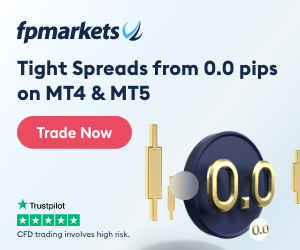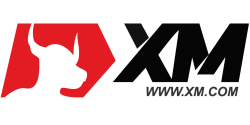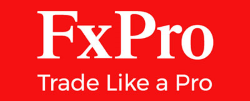For over a decade, FxScouts has been reviewing forex brokers and providing in-depth analyses. Our extensive research and unique testing methodology ensures that all broker reviews are accurate and fair, with hundreds of thousands of data points generated annually. Since 2012, we’ve tested over 180 brokers across global and Australian markets. Our team of professionals are frequently cited in global and regional media, shaping market conversations and trends.
-
MetaTrader 4 Brokers
The top MT4 brokers in AU
-
MetaTrader 5 Brokers
The best MT5 brokers in AU
-
TradingView Brokers
The best TradingView brokers
-
cTrader Brokers
The top cTrader brokers in AU
-
Forex Trading Apps
Trade on the go from your phone
-
Copytrading Brokers
Copy professional traders
-
All Trading Platforms
Find a platform that works for you
75-90% of retail traders lose money trading Forex and CFDs. You should consider whether you understand how CFDs and leveraged trading work and if you can afford the high risk of losing your money. We may receive compensation when you click on links to products we review. Please read our advertising disclosure. By using this website you agree to our Terms of Service.
- FP Markets - Best Trading Tools
- Pepperstone - Best Range of Trading Platforms
- AvaTrade - Best Risk Management Tools
- XM - Best Broker for Beginners
- FxPro - Fastest Trade Execution
- markets.com - Lowest Trading Fees
- BlackBull Markets - Best Institutional CFD Trading Account
- Admirals - Best MetaTrader Trading Tools
- IG - Largest Range of Trading Instruments
Compare Brokers with the best Trading Platforms
Broker | Broker Score | Official Site | Platforms | Proprietary App | FSCA Regulated | Min. Deposit | Leverage | Cost of Trading | Compare | Official Site |
|---|---|---|---|---|---|---|---|---|---|---|
 | 4.40 /5 Read Review | Visit Broker > 79% of retail CFD accounts lose money | MT4, MT5, cTrader, IRESS | Yes | Yes | AUD 100 | 30:1 | USD 7 | Visit Broker > 79% of retail CFD accounts lose money | |
 | 4.61 /5 Read Review | Visit Broker > 89%74- of retail CFD accounts lose money | MT4, MT5, cTrader, TradingView | No | No | AUD 100 | 30:1 | USD 10 | Visit Broker > 89%74- of retail CFD accounts lose money | |
 | 4.59 /5 Read Review | Visit Broker > 76% of retail CFD accounts lose money | MT4, MT5, Avatrade Social, AvaOptions | Yes | Yes | AUD 100 | 30:1 | USD 9 | Visit Broker > 76% of retail CFD accounts lose money | |
 | 4.45 /5 Read Review | Visit Broker > 75.33% of retail CFD accounts lose money | MT4, MT5 | Yes | Yes | AUD 5 | 30:1 | USD 6 | Visit Broker > 75.33% of retail CFD accounts lose money | |
4.39 /5 Read Review | Visit Broker > 71.58% of retail CFD accounts lose money | MT4, MT5, cTrader, FxProEdge | Yes | Yes | AUD 100 | 200:1 | USD 14 | Visit Broker > 71.58% of retail CFD accounts lose money | ||
4.68 /5 Read Review | Visit Broker > 70.3% of retail CFD accounts lose money | MT4, MT5, markets.com | Yes | Yes | AUD 100 | 30:1 | USD 7 | Visit Broker > 70.3% of retail CFD accounts lose money | ||
4.28 /5 Read Review | Visit Broker > N/A of retail CFD accounts lose money | MT4, MT5, WebTrader | No | No | USD 0 | 500:1 | USD 8 | Visit Broker > N/A of retail CFD accounts lose money | ||
4.28 /5 Read Review | Visit Broker > 76% of retail CFD accounts lose money | MT4, MT5, MT Supreme | No | Yes | AUD 100 | 30:1 | USD 8 | Visit Broker > 76% of retail CFD accounts lose money | ||
 | 4.69 /5 Read Review | Visit Broker > 71% of retail CFD accounts lose money | MT4, L2 Dealer, ProRealTime | Yes | Yes | AUD 0 | 30:1 | USD 6 | Visit Broker > 71% of retail CFD accounts lose money |
What is Forex Trading?
Forex trading involves exchanging one currency for another to profit from fluctuations in the exchange rate. Unlike stock markets, the forex market is a decentralised global marketplace, and currencies can be traded around the clock. Forex trading is a popular investment option due to its potential for high returns and liquidity and low transaction costs.
Learn more about how Forex trading works here
What is the difference between a Forex trading platform and a Forex broker?
Forex trading platforms and Forex brokers are two different things, but they are closely related.
Forex trading platforms are applications – either on a phone or a computer – that traders use to place trades, while Forex brokers are companies that find buyers and sellers for your trades. Forex brokers also provide leverage and other services such as education, analysis tools and customer support. Forex brokers charge a fee for these services; this is usually in the form of a markup called the “spread”.
How did we select the trading platforms in this guide?
We have an experienced review team that evaluates Forex brokers and their trading platforms. Our team of experts examines each broker in 7 different areas using over 200 metrics. We invest hundreds of hours annually researching and scrutinising brokers and their platforms to ensure we only recommend the best in the Forex industry.
Of these seven areas, we always prioritise regulation and costs. These are our priorities because traders want to know that their broker is trustworthy and isn’t overcharging them. Brokers constantly alter their products, and we keep our reviews updated with the latest data. You can find out more about our in-depth review process here.
FP Markets – Best Trading Tools
An ASIC-regulated Forex broker with an excellent reputation, FP Markets offers support for MT4, MT5, cTrader, and the IRESS platform alongside a vast range of trading tools, including Autochartist, a Trader’s Toolbox, VPS services, and copy trading services.
Trading Platform Features: An advanced institutional trading platform, IRESS features advanced order placement, alerts on news and price levels, customisable charts, advanced watchlist features, and access to over 10,000 trading instruments. Although FP Markets offers the standard versions of MT4 and MT5, they are transformed into state-of-the-art trading platforms with its Trader’s Toolbox. The Toolbox includes customisable news and data feeds, live sentiment and correlation tracking, tick charts, session maps, sophisticated alarms and messaging and advanced risk management tools.
Execution: FP Markets offers fast execution on its MT4 and MT5 platforms and DMA execution on its IRESS platform. DMA trading means less intervention between the trader and the underlying market and, therefore, no re-quotes.
Trading Costs: FP Markets offers a Standard and Raw account on the MetaTrader platforms both with a minimum deposit of 100 USD. Spreads start at 1 pip (EUR/USD) on the Standard Account, which is average for the industry, and 0.1 pips (EUR/USD) on the Raw Account in exchange for a commission of 6 USD, which is very competitive. The three commission-based IRESS Accounts have much higher minimum deposits: Starting at 1000 AUD for the Standard Account and up to 50,000 AUD for the Premier Account.
Pepperstone – Best Range of Trading Platforms
Established in 2010 and ASIC-regulated, Pepperstone is one of our highest-rated brokers, globally renowned for its choice of trading platforms, including MT4, MT5, cTrader, and TradingView.
Trading Platform Features: All of Pepperstone’s platforms offer automated trading, strategy backtesting, customisable charting, and a range of indicators, and integrate with Autochartist, one of Pepperstone’s free trading tools. TradingView, a relatively new platform, offers even more advanced charting abilities, including custom timeframes, over 100,000 custom-built indicators, and integrated financial analysis.
Execution: Pepperstone offers market execution on all its accounts, with orders fulfilled in less than 0.1s, which is fast for the industry.
Trading Costs: Pepperstone offers some of the lowest trading fees in the industry, and there is no required minimum deposit to open an account. The commission-free Standard Account offers spreads starting at 1.00 pips (EUR/USD), while the Razor Account has a average spread of 0.10 pips (EUR/USD) in exchange for a low commission of 7 USD per lot.
AvaTrade – Best Risk Management Tools
Regulated by eight international authorities, AvaTrade offers a range of trading platforms, including MT4, MT5, AvaOptions, AvaSocial, and its award-winning AvatradeGO mobile trading app.
Trading Platform Features: Its user-friendly proprietary AvatradeGO app is available for both Android and iOS and has an excellent dashboard with easy trade management tools, clear charts, and a Market Trends feature to monitor trading trends within the AvaTrade community. It also features AvaTrade’s AvaProtect tool, which provides loss protection for a limited time. Other app highlights include a market trends monitor, zoom function and seamless synchronisation with AvaTrade’s webtrader.
MT4 and MT5 have a range of indicators and EAs and provide free access to the integrated Trading Central dashboard for both platforms.
Execution: Avatrade’s execution policy states that it takes all factors into account, including account price, costs, speed, the likelihood of execution and settlement, to ensure fast execution of trades across all its platforms.
Trading Costs: Avatrade’s single account features some of the tightest spreads for a commission-free account with a 100 USD minimum deposit – as low as 0.9 pips on the EUR/USD.
XM – Best Broker for Beginners
An excellent all-round broker with a very high trust rating and exceptional customer service, XM was established in 2009 and is regulated by some of the world’s most esteemed financial authorities. XM has garnered acclaim among beginners for its selection of trading platforms, MT4 and MT5, and excellent research and education materials. Furthermore, its trading app is beginner-friendly, ensuring that new traders can navigate the platform and execute trades with ease.
Trading Platform Features: XM supports both MetaTrader 4 and MetaTrader 5 trading platforms, catering to a wide spectrum of trader needs. Additionally, the broker furnishes these platforms with various trading tools, including VPS services and diverse copy trading services. These features empower traders to make well-informed decisions, thus enriching their trading experience. Its beginner-friendly app is intuitive and well-designed and allows traders to easily open and close positions on the move.
Execution: XM is renowned for its rapid and reliable order execution, with 99.53% of all trading orders executed in under one second.
Trading Costs: XM distinguishes itself with some of the lowest fees in the industry. All of XM’s accounts have a minimum deposit of just 5 USD, making them highly accessible, especially to beginners. Spreads start at 1.6 pips on the EUR/USD on its two commission-free accounts. However, on its Zero Account, spreads come down to 0 pips in exchange for a commission of 7 USD (round turn).
FxPro – Fastest Trade Execution
FxPro is well-regulated, with oversight from several top financial authorities, including the FCA in the UK and the Cyprus Securities and Exchange Commission (CySEC). Traders can choose between four different trading platforms, including MT4, MT5, cTrader, and its own in-house platform, FxPro Edge.
Trading Platform Features: FxPro offers an impressive selection of trading platforms, ensuring that all types of traders can find a platform that suits their needs. Furthermore, the FxPro mobile trading app has been lauded for its user-friendly interface and accessibility, making it easy for traders to monitor and execute trades on the go. However, it is worth noting that the educational resources and market analysis tools provided by FxPro are somewhat limited when compared to other brokers.
Execution: FxPro is recognized for its superior order execution, with most client orders being filled in under 13 milliseconds. This swift execution ensures that traders can capitalise on market movements promptly and efficiently, making FxPro an attractive choice for those who value speed and accuracy in their trading activities.
Trading Costs: FxPro offers a wide range of account types with reasonable minimum deposits, making it a suitable option for a variety of traders. Both the MT4 and MT5 accounts offer commission-free trading, while the cTrader account has a commission but tighter spreads – down to 0.3 pips on the EUR/USD.
Markets.com – Lowest Trading Fees
With regulation from some of the world’s best authorities, including Australia’s ASIC and the FCA of the UK, in addition to the FSCA of South Africa, Markets.com is considered a trustworthy broker for Australian traders. It is also listed on the London Stock Exchange, further adding to its credibility. Markets.com provides support for various trading platforms, including MT4, MT5, and its proprietary Markets.com platform.
Trading Platform Features: Markets.com’s proprietary platform is known for its user-friendly interface and advanced analytical tools. It also has other features, such as live market data, sentiment analysis, advanced charting tools, and educational resources available from within the platform.
Execution: Markets.com ensures efficient and swift execution on its platforms, delivering a smooth trading experience. It has numerous processes and procedures in place to ensure traders obtain the best possible execution.
Trading Costs: Markets.com offers a simple account structure with competitive trading costs. Its account is commission-free, with spreads that start at 0.6 pips (EUR/USD) on the lowest tier in exchange for a minimum deposit requirement of 100 USD and lower still on its Platinum Account tier, but this requires an initial deposit of 50,000 USD.
BlackBull Markets – Best Institutional CFD Trading Account
BlackBull Markets is an ECN-only broker providing direct market access on MT4, MT5, TradingView, and its two in-house trading platforms. BlackBull Markets offers three account types, the ECN Standard, ECN Prime and ECN Institutional.
Trading Platform Features: BlackBull Markets caters to a diverse spectrum of trader requirements by offering a rich selection of trading platforms. From renowned platforms like MT4 and MT5 to more feature-rich and modern platforms such as Tradingview, along with its two proprietary platforms, Blackbull Shares and Blackbull Trades, BlackBull Markets furnishes an optimised trading environment that suits both beginner and professional traders.
Execution: BlackBull Markets prides itself on its impressive execution speed, averaging less than 20ms. This expedited execution allows traders to take full advantage of live market fluctuations swiftly and accurately, positioning BlackBull Markets as one of the industry leaders in order execution speed.
Trading Fees: BlackBull Markets has lower fees than many other similar brokers. Its Standard Account is commission-free and has a spread of 0.8 pips (EUR/USD) and no minimum deposit requirement. The Institutional Account has a minimum deposit of 20,000 USD, spreads starting from 0.0 pips, and leverage of 500:1. VPS access is complementary, and a customised MAM/PAMM platform and 24/6 dedicated technical support are both available.
Admirals – Best MetaTrader Trading Tools
Founded in 2001, Admirals is regulated by some of the world’s top-tier authorities, including the Australian Securities and Investment Commission (ASIC), ensuring a high level of trust and security for Australian traders.
Trading Platforms: Admirals offers MT4, MT5, and its own in-house trading app. It also offers the MetaTrader Supreme Edition, a comprehensive plugin that transforms the standard MetaTrader platforms into advanced trading terminals. Integrated into this Supreme Edition is Trading Central, a premier provider of technical analysis, along with several other useful tools, such as advanced order management and charting tools. These tools set Admirals apart from other brokers, providing a richer, more nuanced trading experience. Admirals also offers a Virtual Private Server (VPS) service, ensuring seamless trading performance.
Execution Speed: Admirals prides itself on its fast execution speeds. While the exact speed can vary based on market conditions and the size of the order, it’s important to note that as an ECN broker, Admirals provides direct market access, ensuring some of the fastest execution speeds available.
Trading Costs: Admirals offers extremely competitive trading costs. All accounts have a minimum deposit requirement of 100 AUD. The Zero accounts have spreads starting at 0.0pips on the EUR/USD, and a commission of between 1.8 and 3 USD is charged per lot per side, while the Standard Accounts have a 0.5 pip (EUR/USD) spread, and no commissions are charged.
IG – Largest Range of Trading Instruments
| 🏦 Min. Deposit | AUD 0 |
| 🛡️ Regulated By | ASIC, BaFin, MAS, CFTC |
| 💵 Trading Cost | USD 6 |
| ⚖️ Max. Leverage | 30:1 |
| 💹 Copy Trading | Yes |
| 🖥️ Platforms | MT4, L2 Dealer, ProRealTime |
| 💱 Instruments | Bonds, Commodities, Cryptocurrencies, Digital 100s, Stock CFDs, ETFs, Forex, Indices, Interest Rates |
An exceptional all-round broker with a long-standing reputation, IG was founded in 1974 and has been regulated by ASIC since 2001. IG is renowned for its safe and secure trading environment, competitive trading fees, and an extensive array of trading instruments and platforms.
Trading Platform Features: IG provides access to its award-winning web trader platform and mobile app, which collectively host over 17,000 instruments. It also offers the L2 Dealer platform and MT4. This diverse offering accommodates a wide variety of trading preferences and strategies. The platforms are supplemented with an array of trading tools that can assist traders in formulating and executing their strategies more effectively.
Execution: As one of the largest CFD brokers globally, IG is known for its reliable and strict order execution, ensuring that traders get the best prices possible.
Trading Costs: IG offers two low-cost trading accounts with no minimum deposit requirements, making it accessible for traders at all levels. You can choose to trade on either the MT4 platform, in which case spreads will average at 0.75 pips on the EUR/USD, or on the IG platform, where spreads average at 0.86 pips on the EUR/USD.
Guide to the Best Trading Platforms
The most popular trading platforms are MetaTrader 4 (MT4), MetaTrader 5 (MT5), cTrader and TradingView. Many brokers also have their own proprietary trading platforms. Almost all trading platforms are also available as mobile trading apps. The best Forex trading platform for you will depend on your trading experience and personal taste.
What is MetaTrader4 (MT4)?
Available at over 90% of Forex brokers, MT4 can run on any system, regardless of age, has extremely fast execution, and has the largest number of Expert Advisors.
Developed in 2005 by MetaQuotes, MT4 is the world’s most popular Forex trading platform. MT4 gives traders real-time access to the Forex market, enabling them to trade currencies, commodities, indices, and cryptocurrencies. However, it does not natively allow trading on stock CFDs, ETFs, and bonds, which are available on MT5, cTrader, and TradingView.
The platform also has advanced charting tools and customisable trading layouts, but its interface is outdated, and other platforms, such as MT5, cTrader, and TradingView, have a much broader range of platform tools and more advanced functionality.
Because MT4 has such low resource requirements, it can run on both new and old devices and has been developed to initiate trades as quickly as a Forex broker can process them.
One of the main benefits of MT4 is automated trading with trading robots called Expert Advisors (EAs). Traders can build or purchase EAs, which will trade within the parameters of a pre-set algorithm. Before MT4, automated trading was only available to banks and hedge funds. There are also many more EAs available for MT4 than any other platform in the world.
Watch our MT4 tutorial video
Learn more about MT4.
Find out more about our favourite MT4 brokers.
What is MetaTrader5 (MT5)?
A feature-rich and modern trading platform compared to MT4, MT5 is more powerful and efficient and offers trading on a broad range of tradable assets, including stocks, ETFs, and bonds.
Released in 2010, MT5 is considered a more advanced and versatile platform than MT4. One of the key differences is that MT5 has a built-in economic calendar and more advanced charting tools. MT5 also supports more order types than MT4 and, unlike MT4, allows native trading of assets like stocks, ETFs and bonds.
Another feature that sets MT5 apart from MT4 is its Depth of Market DOM feature. DOM measures the liquidity of an asset based on its supply and demand. It displays the number of open buy and sell orders for a given asset.
MT5 also has an improved programming language called MetaQuotes Language 5 (MQL5) that allows traders to create more complex EAs than is possible with MQL4, but there are far fewer pre-programmed EAs available for download on MT5.
Although MT5 has slowly gained popularity and is available at many more Forex brokers than cTrader and TradingView, it is not as user-friendly or easy to set up.
Watch our MT5 Tutorial Video
Learn more about MT5.
Find out more about our favourite MT5 brokers.
What is cTrader?
cTrader is a modern-looking and user-friendly platform with more advanced functionality than MT4 and MT5. cTrader users are also more profitable than their MetaTrader counterparts.
Developed by Spotware and released in 2011, cTrader is a trading platform popular among forex traders for its advanced features and user-friendly interface. cTrader advanced charting capabilities include 70+ technical indicators, 26 time frames, a range of chart types, and Depth of Market functionality. cTrader also has a built-in economic calendar and a wide range of advanced order types.
Like MT4 and MT5, cTrader supports automated trading through cTrader Automate, a feature for developing and backtesting trading robots called cBots. cTrader also has an integrated copy trading function called cTrader Copy, allowing traders to copy the trades of other traders.
Unfortunately, cTrader is not as widely available as MetaTrader software programs, but according to Spotware’s internal calculations, 35% more cTrader users are profitable compared to the industry average. This amazing statistic highlights why cTrader has become MetaTrader’s main competitor.
Watch out cTrader Tutorial Video
Learn more about cTrader
Find out more about our favourite cTrader brokers
What is TradingView?
TradingView has the most advanced charting functionality of all third-party trading platforms and is the most customisable. However, because it is fairly new, it is the least widely available platform.
TradingView is a charting platform and social network used by 50 million traders and investors worldwide to spot opportunities across global markets. TradingView also works with select brokers, allowing traders to trade directly from TradingView’s charting platform.
The TradingView platform offers a fully customisable experience, with 12 chart types, custom time intervals, 100,000+ community-built indicators, integrated financial analysis, and its own programming language, called PineScript, which allows traders to share their automated trading strategies.
Overall, TradingView is the most advanced, customisable, and feature-rich third-party platform available, but traders will have few brokers to choose from that offer its services.
What are Proprietary Trading Platforms?
Proprietary trading platforms are trading platforms that belong to a single broker. Most of the larger brokers have proprietary platforms. They generally work in a web browser and are designed to be intuitive and easy for beginners to learn. However, they tend to be less advanced; many do not have automated trading, for example. Some of our favourite broker platforms are AvaTrade, XTB, Skilling and IG.
Be aware that by choosing a broker’s proprietary platform rather than MT4, MT5, cTrader or TradingView, you will not be able to take the platform with you if you decide to switch brokers. So, you will lose all your specific platform knowledge and will have to start all over again with your new broker.
Learn more about Proprietary trading platforms here
What are Mobile Trading Apps?
Mobile trading apps are trading platforms that work on mobile devices, like mobile phones and tablets. Most trading platforms are available on Android and iOS devices, though they lose some functionality in the switch to the smaller screen size and emphasis on touch-screen controls.
Key Factors to Consider When Choosing a Forex Trading Platform
Regulation: Because traders generally have to use a broker to trade on a platform, choosing a broker regulated by a reputable financial authority is essential to protect your funds and ensure that you are treated fairly. Brokers regulated by authorities such as the Australian Securities and Investments Commission (ASIC) and the Financial Conduct Authority (FCA) of the UK or tend to be reliable and trustworthy brokers.
User interface and functionality: The platform should have an easy-to-use interface with straightforward navigation, advanced charting tools, customisable indicators, and other features that suit your trading style and preferences. For example, TradingView and cTrader are more user-friendly and feature-rich than their MetaTrader counterparts, but these two platforms are only available at select brokers.
Reliability and speed: The platform should have fast order execution, low latency, and minimal downtime to ensure you can place trades quickly and efficiently. For example, a trading platform that can execute trades in under 100ms is considered a low-latency platform, but this will also depend on the broker’s ability to process trades.
Trading tools: The platform should offer a range of trading tools, including risk management tools, economic calendars, market analysis, and educational resources. More advanced trading platforms, such as cTrader, have integrated economic calendars and a trailing stop order function that operates from the server side rather than on the terminal side like MT4 and MT5. This functionality means the trailing stop will stay in place even if the terminal goes offline. Find out more about the various order types between the trading platforms here.
Security: The platform should have robust security features, including two-factor authentication, encryption, and firewalls, to protect your personal and financial information. Most trading platforms have robust security features, but this will largely depend on your broker.
Costs and fees: Consider the trading fees, spreads, and commissions associated with your broker to ensure they are reasonable and competitive. Brokers with a minimum deposit of 200 USD or less, an average commission-free spread of around 0.9 pips (EUR/USD), or a commission of 7 – 10 USD with a spread of 0.1 – 0.3 pips (EUR/USD) are considered brokers with low trading costs.
Trading Goals: When choosing a trading platform, ensure it has compatible functionality with your trading goals and style. For example, if you use Expert Advisors or automated trading, you may consider using a platform like MT4, MT5, cTrader or TradingView. However, traders who trade on stock CFDs would not choose MT4 because it does not natively offer stock CFD trading. In contrast, beginner traders may consider a user-friendly platform or one that offers copy trading functionality.
Trading Platform FAQs
What trading platform is best for Forex trading?
Our team has reviewed over 180 brokers to find those with the best Forex trading platforms. Traders with different priorities and experience levels prefer different trading platforms. These are our favourite brokers with the best trading platforms.
- FP Market – Largest range of Stock CFDs
- Pepperstone – Best Range of Trading Platforms
- Avatrade – Best Risk Management Tools
Which Currency Pairs can I trade on a trading platform?
Some Forex trading platforms have more currency pairs to trade than others, and this depends on which Forex broker your trading platform is connected to. Beginners should start with the major currency pairs, like the EUR/USD or the USD/JPY, as they are less volatile and are less expensive to trade than minor currency pairs and exotic currency pairs.
What other assets can I trade on a Trading Platform?
Other assets you can trade are stocks, commodities, cryptocurrencies, indices and government bonds. Which assets are available on your trading platform will depend on your broker, and some brokers offer many more types of assets. Some of the rare assets include interest rates, ETFs and futures.
What are technical indicators?
Technical indicators are used to identify trends, measure market volatility, and assess the strength and direction of current market conditions. Technical indicators can be divided into two categories: trend-following and oscillators. Trend-following indicators are used to identify the direction of a trend, while oscillators identify reversals in the trend.
Common types of technical indicators include moving averages, momentum indicators, relative strength index (RSI), Bollinger Bands, MACD (moving average convergence divergence), stochastics, Ichimoku clouds, Fibonacci retracements and more. Technical traders use indicators to determine potential entry and exit points for trades.
What are trading tools?
Trading tools are any technology or application traders use to help them make trading decisions, track trades, and manage their portfolios. These tools can range from basic charting software to complex AI-driven algorithms for high-frequency trading. Trading tools typically provide access to market data, news feeds, and real-time risk management tools.
Many trading tools also come with specialized features such as portfolio analysis, order execution, backtesting of strategies, portfolio optimisation, and access to multiple exchanges in one place. In addition to these more practical applications, they may include educational resources such as videos and tutorials that help traders gain insight into the markets they trade.
Forex Risk Disclaimer
Trading Forex and CFDs is not suitable for all investors as it carries a high degree of risk to your capital: 75-90% of retail investors lose money trading these products. Forex and CFD transactions involve high risk due to the following factors: Leverage, market volatility, slippage arising from a lack of liquidity, inadequate trading knowledge or experience, and a lack of regulatory protection. Traders should not deposit any money that is not considered disposable income. Regardless of how much research you have done or how confident you are in your trade, there is always a substantial risk of loss. (Learn more about these risks from the Australian regulator, ASIC or the UK’s regulator, the FCA).
Our Rating & Review Methodology
Our overall Forex Rankings report and Directory of CFD Brokers to Avoid are the result of extensive research on over 180 Forex brokers. These resources help traders find the best Forex brokers – and steer them away from the worst ones. These resources have been compiled using over 200 data points on each broker and over 3000 hours of research. Our team conducts all research independently: Testing brokers, gathering information from broker representatives and sifting through legal documents. Learn more about how we rank brokers.
Editorial Team

Chris Cammack
Head of Content
Chris joined the company in 2019 after ten years experience in research, editorial and design for political and financial publications. His background has given him a deep knowledge of international financial markets and the geopolitics that affects them. Chris has a keen eye for editing and a voracious appetite for financial and political current affairs. He ensures that our content across all sites meets the standards of quality and transparency that our readers expect.

Alison Heyerdahl
Senior Financial Writer
Alison joined the team as a writer in 2021. She has a medical degree with a focus on physiotherapy and a bachelor’s in psychology. However, her interest in forex trading and her love for writing led her to switch careers, and she now has over eight years experience in research and content development. She has tested and reviewed 100+ brokers and has a great understanding of the Forex trading world.

Ida Hermansen
Financial Writer
Ida joined our team as a financial writer in 2023. She has a degree in Digital Marketing and a background in content writing and SEO. In addition to her marketing and writing skills, Ida also has an interest in cryptocurrencies and blockchain networks. Her interest in crypto trading led to a wider fascination with Forex technical analysis and price movement. She continues to develop her skills and knowledge in Forex trading and keeps a close eye on which Forex brokers offer the best trading environments for new traders.
Stay updated
This form has double opt in enabled. You will need to confirm your email address before being added to the list.





































